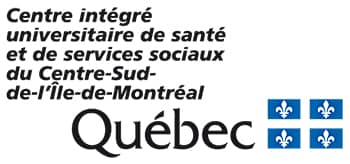User section
This section lists all the entries that you will find under various tabs on this microsite.
Active Release Techniques (ART®)
Ottawa Chiropractic Health Clinic
This informative page provides an overview of ART®, a patented massage technique practiced by chiropractors.
Association québécoise de la douleur chronique (AQDC) [Quebec chronic pain association]
Mindfulness meditation workshops (available in French only)
Université de Montréal
Developed by the Université de Montréal, this series of 12 workshops teaches participants how to practice mindfulness meditation and is presented in the form of video clips. This type of meditation is intended to reduce stress or regulate emotions. The workshops are presented by Professor of Psychiatry Hugues Cormier.
Ergothérapie et maux de dos en milieux de travail [Occupational therapy and back pain in the workplace; available in French only]
Ordre des ergothérapeutes du Québec
Taking four workers as a concrete example, this document illustrates how occupational therapy can be used in the treatment of back pain.
Relaxation and meditation exercises
Passeport Santé [Health passport]
This site proposes a number of relaxation and meditation exercises, presented as audio clips.
CRAN clinical fact sheets
Acupuncture
Help for family and friends
Diet
- Comment faire équipe avec votre estomac à petit prix
- How to team up with your stomach at a cheap price
Buprenorphine
Health insurance card (RAMQ)
Take-home doses
How to manage the adverse effects of methadone
Pregnancy
Hepatitis C
Dental hygiene
Safe injection
Youth protection
CRAN Regular Services
Withdrawal
Formation PROFAN
Comment sauver des vies par l'administration de naloxone
Cet atelier vous permettra d'acquérir les informations nécessaires concernant la prévention des surdoses mortelles et la technique d'utilisation de la naloxone. Vous pourrez ensuite obtenir gratuitement votre trousse de naloxone et être prêt(e) à intervenir en cas de situation de surdose.
Pour en savoir plus sur la formation PROFAN :http://metadame.org/profan-formation-naloxone/
Pour connaître les dates des prochaines formations et vous inscrire :Méta d'Âme
514-528-9000
chantale@metadame.org ou ange.desaulniers@metadame.org“Gérer sa douleur au travail” [How to manage your pain at work; available in French only]
Association québécoise de la douleur chronique (AQDC)
How can an occupational therapist help a patient manage his pain in everyday life? How can his workplace be modified to reduce his pain? This article addresses the topic.
Je sais comment ma douleur chronique peut être évaluée [I know how my chronic pain can be assessed; available in French only]
This tool allows the patient to rate the severity of his pain on a scale of 1 to 10. For a full-screen image, click on the scale.
La neurostimulation pour soulager la douleur chronique [Neurostimulation for chronic pain relief; available in French only]
Montreal Neurological Hospital Chronic Pain Clinic, McGill University Health Centre (MUHC)
Neurostimulation involves implanting a device under the skin that delivers electrical signals to the brain, blocking the pain signal. This information is intended for patients and their families.
“Les psychothérapies” [Psychotherapy; available in French only]
Association québécoise de la douleur chronique (AQDC)
This article, which provides a fine summary of the topic, explains how the different types of psychotherapy can help improve the day-to-day quality of life of people living with chronic pain. The article also gives pointers to help the patient choose the type of therapist he needs.
Dr. Mark Ware talks about chronic pain management
Video interview with Dr. Mark Ware, chronic pain specialist at the McGill University Health Centre (MUHC). Duration: 2 minutes 30 seconds.
Les opiacés à action prolongée – Pour soulager la douleur [Long-acting opioids – For pain relief; available in French only]
This Université de Montréal Hospital Centre health fact sheet focuses on long-acting opioids available on the pharmaceutical market. It covers the same topics as the health fact sheet on short-acting opioids: how to take the medication, length of treatment, rules for safe and optimal use as well as recommendations about side effects.
Les opiacés à action rapide – Pour soulager la douleur [Short-acting opioids – For pain relief; available in French only]
This Université de Montréal Hospital Centre health fact sheet focuses on the different types of short-acting opioids available on the pharmaceutical market. It explains how to take these medications, the length of treatment as well as the main rules to follow for their safe and optimal use. The main side effects are also listed along with advice on how to deal with them.
Logis Phare, supervised housing for pregnant women and families in OST treatment
My Tool Box Chronic Pain Self-Management Program
McGill University Health Centre (MUHC)
Program for patients and their families
Based on the Stanford Program “My Tool Box”, the MUHC program is a free six-week program for patients living with chronic diseases and their families. It is designed to teach people the skills they need to live well with chroni.c health conditions such as chronic pain. These fun, practical and interactive workshops emphasize coping strategies and practical skills.
Maux de dos: en guerre contre la douleur [Back pain: at war with pain; available in French only]
Émission “Une pilule, une petite granule”, Télé-Québec [“One pill, one small granule” program, Télé-Québec television network]
In 2010, the program told the story of Catherine, who struggles with chronic back pain. In her case, alternative methods, in particular chiropractic treatment, improved her comfort level significantly.
My Opioid Manager
Toronto Rehabilitation Institute, University Health Network
Developed for users undergoing chronic pain treatment, this practical book contains information about the different types of pain and opioid medications, questionnaires, tables and diagrams.

